Well it is Wednesday again, which means it is time to revisit the wilderness adventures of Walter Breckenridge, former preparator, curator, and director of the Bell Museum of Natural History. His description from his autobiography, My Life in Natural History, narrates the following images that he captured while studying the Spruce Grouse in the Superior National Forest near Winton, Minnesota in the spring of 1931. Breckenridge’s trip was at the request of his boss Thomas Sadler Roberts, who at the time was writing what would become the definitive volume on the ornithology of the state, The Birds of Minnesota(published in 1932).
“I got a good many demanding assignments from Dr. Roberts during the final stages of his writing the Birds of Minnesota. One was to locate a promising habitat for the spruce grouse… and to describe and photograph, if possible, the courtship that would correspond to the drumming of the ruffed grouse as it had never been described adequately. After checking with the conservation officers, then known as game wardens, and the few knowledgeable bird observers we knew from northern Minnesota, we decided to concentrate our search in the Snowbank Lake area east of Ely near the Canadian border. Wardens from the area suggested that a Chippewa Indian named Jack Linklater, who was one of the wardens, would be an ideal assistant since he was as well acquainted with the wildlife as anyone in the region. This I found was true and I was happy to enlist his help.”
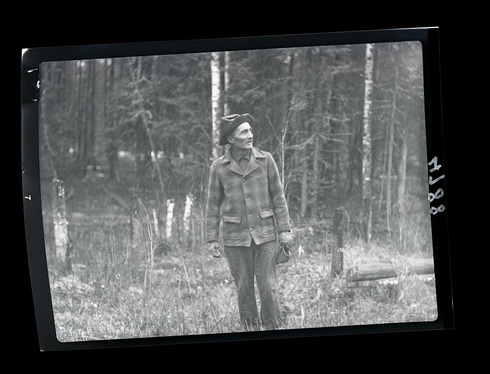
– Jack Linklater, Winton, May 1931
“Our first move was to follow the single-track logging road to its end where Mrs. And Mrs. George Mackay, the warden for the area, lived. We could arrange for some of our meals with them. The isolated Fernberg Ranger cabin was located on the Kawishiwi River, not far from their home where we found reasonable shelter for the nights…”
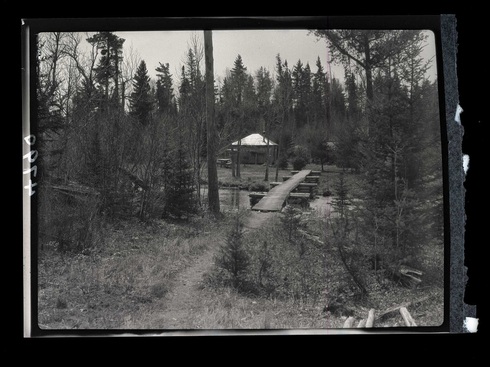
– Forestry cabin, Fernberg, May 1931
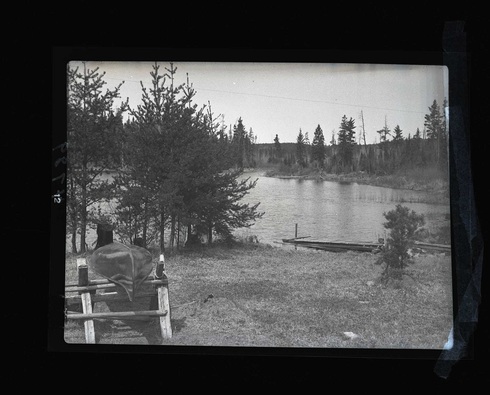
– Forestry cabin, Fernberg, May 1931
“Gradually over a period of days we accumulated a great deal of detail about the courtship of the spruce grouse by stalking quietly about in the spruce and jack pine habitat and listening intently for any whirring sounds of wings… My first contact with a courting male grouse was finding a lone bird perched on a branch six or eight feet from the ground. Watching it quietly from a distance I could see it was undisturbed. “
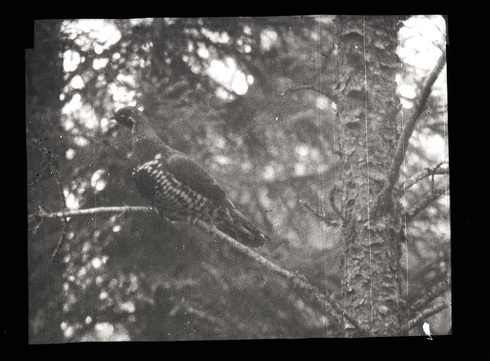
– Canada Spruce Grouse alert on limb of tree, Winton, May 1931
“Then presently it flew, not to disappear in the distant woods, but only 20 or 30 feet, where it arrested its forward flight and, with a whirring of its wings, it settled to the ground. There it flipped its wings a few times, suggesting the beginning of the ruffed grouse’s drumming, but never continuing for more than two or three beats and producing little or no sound. Then peering upward, it suddenly flew straight up to alight on a horizontal branch. There it remained for 20 to 30 seconds when it then flew back to the ground, just below the branch where I had first spotted it. There it stood for a few seconds before repeating the upward flight as it had done at the other end of the opening. I began to realize that this was an established pattern of activity, which later I found was repeated many times, taking from one to two minutes for each circuit. Later I counted the bird repeating this round trip 50 times between 5:15 and 7:40 p.m. The branches on which this bird perched repeatedly became smooth, even polished. By searching for these polished branches, we were able to locate a number of courting grounds…”
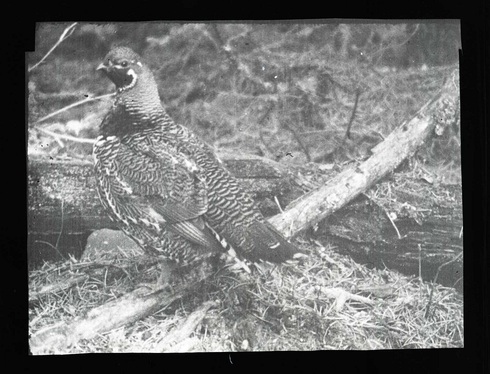
– Canada Spruce Grouse, large, side view, May 1931
“If a female grouse appeared, the male was immediately transformed from the quiet methodical bird into a spirited courting “show off.” His tail was raised to a vertical position and the head cocked back as to almost touch his tail, thus appearing to be throwing out his chest. Then walking slowly in very dignified steps toward his mate, he would stop periodically and snap open his tail, fanlike, to form a nearly complete circle with the beautiful brown tips of the tail feathers forming a rich brown bar around the tip of the tail… “
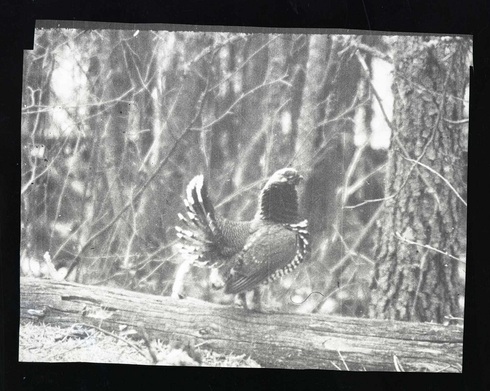
– Canada Spruce Grouse strutting with tail spread, side view, May 1931
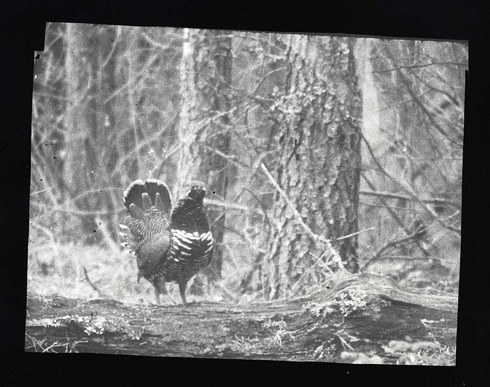
– Canada Spruce Grouse strutting with tail half spread, Winton, May 1931
“All of my challenging assignments were not as successful as this one, of course, but my report on this one pleased Dr. Roberts immensely. He included four whole pages of my field notes in his Birds of Minnesota, together with several photographs reproduced from the motion pictures I got of the entire series of performances.”